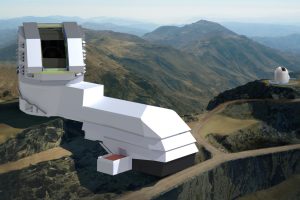Due dei progetti scientifici per LSST sono guidati da astronomi INAF – OAPA

LSST (Large Synoptic Survey Telescope) è il l futuro dell’astronomia nel dominio temporale. LSST è un telescopio di nuova generazione in fase di costruzione su Cerro Pachon (Cile), a 2700 metri di altezza. Sarà dotato di uno specchio primario di 8.4 metri di diametro ed una camera innovativa capace di osservare un campo di vista enorme, pari a 49 volte le dimensioni della Luna piena. Questo permetterà a LSST di osservare l’intero cielo in appena tre notti.
LSST condurrà una campagna osservativa senza precedenti, osservando ripetutamente le sorgenti di tutto il cielo in diverse bande ottiche per 10 anni. Si prevede che produrrà in tutto più di 5 milioni di singole esposizioni su un’area di 30000 gradi quadrati nel cielo. Queste osservazioni saranno preziose per studi di variabilità in multi-banda di una grande varietà di sorgenti diverse, da stelle della Via Lattea a galassie esterne, e saranno rivoluzionarie per diversi campi di rilievo dell’astronomia moderna, come la cosmologia, lo studio del Sistema Solare, lo studio degli oggetti transienti della Via Lattea, la struttura della nostra Galassia, etc…
L’inizio delle operazioni di LSST è programmato per il 2022. Nel frattempo, gli astronomi di tutto il mondo coinvolti in LSST stanno pianificando i progetti scientifici che costitueranno la campagna osservativa. Questi progetti, denominati “white papers”, saranno utilizzati per ottimizzare la strategia osservativa di LSST. Due white papers sono guidati da astronomi dell’INAF – Osservatorio Astronomico di Palermo.
Il progetto: “Investigating the population of Galactic star formation regions and star clusters within a Wide-Fast-Deep Coverage of the Galactic Plane“, guidato da Loredana Prisinzano insieme a Laura Magrini (INAF-Osservatorio Astrofisico di Firenze), ha come obiettivo lo studio degli ammassi stellari della Via Lattea ed in particolare la scoperta e caratterizzazione di nuovi ammassi stellari. Le ripetute esposizioni in bande ottiche di LSST, infatti, permetteranno di raggiungere una profondità (ossia una sensibilità alle sorgenti meno brillanti) mai raggiunta finora. Questo significa poter osservare stelle a maggiori distanze e maggiormente estinte dalle polveri della Via Lattea di quanto è stato possibile fare finora. Questo progetto permetteà quindi di mappare la distribuzione degli ammassi stellari della Galassia e studiarne le proprietà con una completezza mai raggiunta fino ad oggi.
Il progetto “Young Stars and their Variability with LSST“, guidato da Rosaria Bonito insieme a Patrick Hartigan (Physics and Astronomy Dept., Rice University) e Eric Feigelson (Pennsylvania State University), sarà invece dedicato allo studio di variabilità delle stelle di pre-sequenza, ed in particolare quelle con un disco protoplanetario. Questi dischi sono le strutture da cui evolvono i sistemi planetari, ed orbitano attorno la proria stella per pochi milioni di anni prima di disperdersi. Lo studio della variabilità delle stelle giovani è quindi di grande interesse sia per la comprensione delle prime fasi evolutive delle stelle che per la formazione planetaria. LSST permetterà, per la prima volta, di monitorare la variabilità di un numero enorme di stelle di pre-sequenza sparse in diverse regioni della Via Lattea, per un periodo di 10 anni.
La figura (link) mostra un rendering di LSST.
di Mario Giuseppe Guarcello ( segui mguarce)
